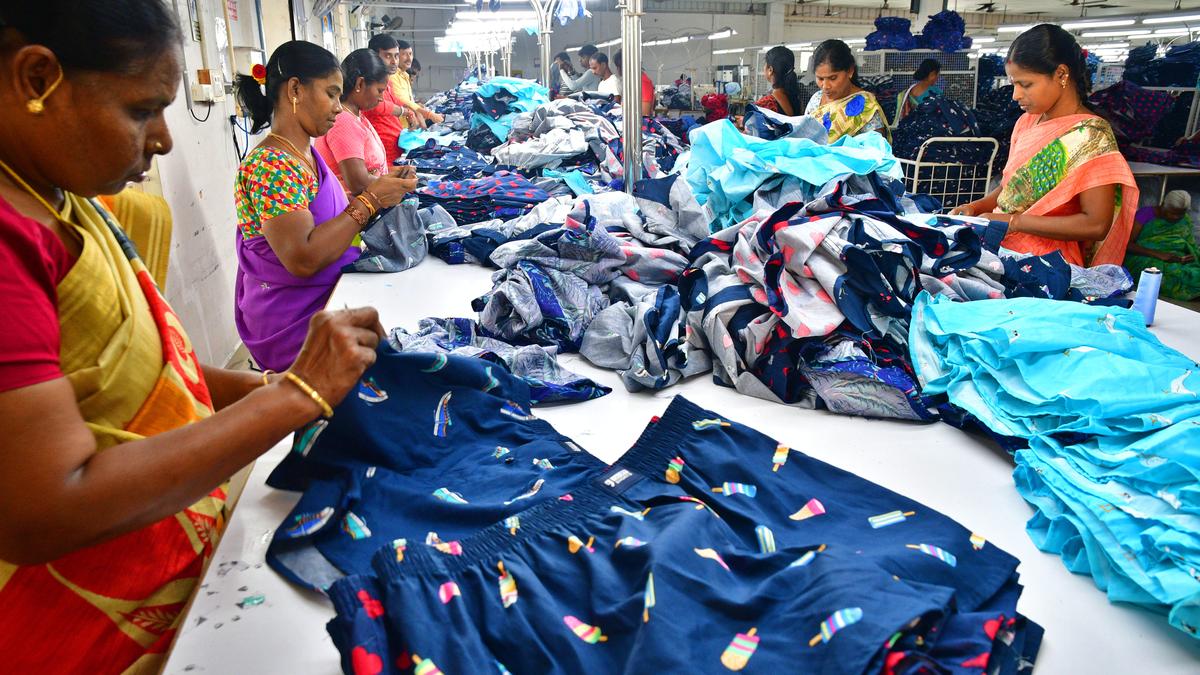India’s economic ascent, which is now valued at $4.19 trillion, has earned it a firm place in the global growth story. The country is poised to become the world’s third-largest economy. Yet, this momentum now faces a formidable disruption — the proposed 50% tariffs by the United States President Donald Trump on Indian exports. Targeting $40 billion in trade, these tariffs could shave off nearly 1% from India’s GDP, striking labour-intensive sectors such as textiles, gems, and leather and footwear which are critical industries that disproportionately employ women.
Unlike China, which has weathered U.S. tariffs through its manufacturing scale and diversified exports, India remains vulnerable. The U.S. accounts for 18% of India’s exports; an increase in tariff could lead to 30%-35% cost disadvantage against competitors such as Vietnam leaving Indian exporters exposed. In this moment of crisis, these words appear prescient: “The strength of a nation lies in the strength of its women.” India’s failure to economically empower half its population is not just a social concern. It is now a strategic liability.
The tariffs threaten to destabilise employment for millions of Indian women. The textiles, gems, leather and footwear sectors, which employ nearly 50 million people, face a projected export decline of up to 50%. Additionally, India’s existing low female labour force participation rate (FLFPR) has remained stuck between 37% and 41.7% far below the global average and China’s 60%. According to the International Monetary Fund, closing the gender gap could boost India’s GDP by 27% in the long term Yet, this is a promise that is stifled by cultural constraints, policy inertia and systemic barriers to employment.
The ticking clock
India is inching closer to its peak of its demographic dividend — a period where the working-age population vastly outnumbers dependents. This window, which could close by 2045, once fuelled growth in China, Japan, and the U.S. — economies now past their prime demographic advantage, with flattening growth curves. India must act to convert this fleeting dividend into sustained prosperity, and this means fully integrating women into the workforce.
Labour participation by rural women has inched up, but mostly in unpaid and low-productivity family work. In urban India, female workforce participation has stagnated. Safety concerns, unreliable public transport, lack of sanitation, and the crushing burden of unpaid care work continue to push women out of schools and jobs.
India risks the fate of Southern European economies such as Italy and Greece, where low FLFPR has placed a long-term drag on growth. The urgency is clear as it is a now-or-never moment.
Lessons from abroad, solutions at home
Global superpowers offer a road map. The U.S. leveraged women’s labour during the Second World War with equal pay and childcare. China’s post-1978 reforms drove 60% FLFPR through state-backed care and education. Japan raised its FLFPR from 63% to 70%, boosting GDP per capita by 4%. The Netherlands’ part-time work model, with equal benefits, suits India, where women prefer such roles. These nations invested in legal protections, care infrastructure, and skills training, which are areas where India lags. Instead of short-term populism or blanket cash transfers, India needs structural reforms that empower women as economic agents.
Karnataka’s Shakti scheme, which offers free public bus travel to women, is one such intervention. Since its launch in 2023, female ridership has surged by over 40%. The scheme has enhanced women’s mobility for work, education, and enterprise — especially in rural and peri-urban areas. This has enabled more women to gain improved access to job markets, decrease their dependence on male family members, and achieve greater autonomy.
Redirecting spending from broad welfare schemes to targeted programmes such as tax incentives for female entrepreneurs, digital inclusion drives, and gender-focused skilling platforms can yield more sustainable gains. Formalising gig and part-time work through updated labour codes and social protections would bring millions of women into the formal economy.
Urban Company, a leading gig platform, has onboarded over 15,000 women service providers. These workers earn ₹18,000-₹25,000 in a month, along with access to accident insurance, maternity benefits, and skill development. The platform’s emphasis on safety, training and transparent pay highlights how gig work can be empowering particularly for semi-skilled urban women.
On the public side, Rajasthan’s Indira Gandhi Urban Employment Guarantee Scheme has created over four crore person-days of work, with nearly 65% of jobs going to women. Its flexible, neighbourhood-based jobs in sanitation, greening and care work have enabled many first-time workers — especially those restricted by domestic duties — to enter the workforce. These cases show that when the state recognises and supports non-traditional work, it can unlock massive economic value.
A moment of reckoning
The looming U.S. tariff shock should serve as a wake-up call. India’s economic vulnerabilities are not just due to external threats. They also stem from internal neglect, especially in tapping the potential of working-age women.
Empowering women is not a social gesture. It is a growth imperative. It is the linchpin of demographic dividend utilisation, export competitiveness and equitable development. If India seeks to become a true global powerhouse, its progress must be built on the shoulders of both its men and women. India stands at a crossroads. It can rise by investing in its women. Or it can falter by ignoring them. One path leads to resilience and inclusive growth. The other path leads to missed opportunities and economic fragility.
Anurodh Lalit Jain is Vice-Chairman, All India Congress Committee (Minority Department) and a Social Economic Analyst
Published – August 27, 2025 12:08 am IST
